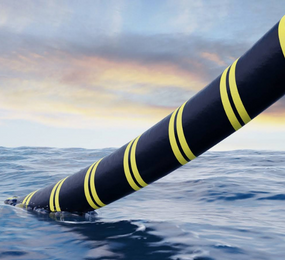The global shift towards renewable energy sources has propelled the wind power industry to the forefront of the clean energy revolution. As wind farms continue to proliferate across the globe, harnessing the power of wind effectively becomes paramount. In this article, we explore the vital role of wind power analysis in optimising wind farm performance, mitigating risks, and unlocking the full potential of this sustainable energy source. Join us at the 5th Edition Windpower Data and Digital Innovation Forum on 5th-6th March 2024 in Berlin, Germany, as we delve into the fascinating world of wind power analysis and its implications for the future of clean energy.
Understanding Wind Power Analysis
Wind power analysis encompasses a wide range of methodologies and tools used to evaluate, monitor, and optimise the performance of wind farms. By analysing key data points and utilising digital innovations, stakeholders in the wind power industry can gain valuable insights into various aspects of wind farm operations, including resource assessment, turbine performance, maintenance optimization, and grid integration.
Accurate resource assessment is fundamental to the success of any wind power project. Data-driven methodologies, such as computational fluid dynamics (CFD) simulations and meteorological measurements, enable experts to analyse wind patterns, turbulence, and other factors that impact wind farm performance. Through sophisticated models and simulations, wind power analysts can identify optimal turbine placement, assess the energy yield, and predict potential power losses due to wake effects.
Analysing and optimising the performance of individual wind turbines is crucial for maximising power generation. By collecting real-time data from various sensors embedded in the turbines, analysts can monitor critical parameters, including wind speed, temperature, rotor speed, and power output. Advanced data analytics techniques, such as machine learning algorithms, can then process this information to identify performance gaps, detect anomalies, and suggest corrective actions for optimal turbine operation.
Wind power analysis plays a pivotal role in developing predictive maintenance strategies that minimise downtime and maximise turbine lifespan. By leveraging historical performance data and employing condition monitoring techniques, analysts can detect potential equipment failures before they occur. Predictive analytics models can assess the health of turbine components, recommend maintenance interventions, and optimise maintenance schedules, resulting in reduced costs and enhanced operational efficiency.
Integrating wind power into the electrical grid requires accurate forecasting of energy generation. Wind power analysis employs advanced algorithms to predict wind patterns, assess power ramp rates, and estimate energy production in real-time. By combining historical data with weather forecasts and machine learning algorithms, analysts can provide accurate and reliable energy forecasts, enabling grid operators to efficiently manage the variability and intermittency of wind power.
The emergence of digital innovations has revolutionised wind power analysis, enabling more accurate, efficient, and scalable solutions. Cloud computing, big data analytics, and IoT technologies have made it possible to process vast amounts of data in real-time, allowing for faster and more precise analysis. Digital twins, virtual replicas of wind farms, provide a platform for simulating and optimising wind farm operations, testing different scenarios, and improving decision-making processes.
As wind power continues to grow globally, the role of wind power analysis will become increasingly crucial. Advanced data analytics, artificial intelligence, and machine learning algorithms will drive further optimization and automation in wind farm operations. Integration with other renewable energy sources, such as solar power, will create opportunities for synergistic analysis and optimization of hybrid energy systems. Moreover, ongoing research and innovation will continuously refine analysis methodologies, making them more accurate, reliable, and cost-effective.
Wind power analysis has emerged as a vital discipline in maximising the potential of wind energy. By leveraging data and digital innovations, stakeholders in the wind power industry can optimise resource assessment, turbine performance, maintenance strategies, and grid integration. The 5th Edition Windpower Data and Digital Innovation Forum in Berlin, Germany, on 5th-6th March 2024, will provide a platform to explore the latest advancements in wind power analysis and their transformative impact on the clean energy sector. Together, we can unlock the full potential of wind power and accelerate the transition to a sustainable future.
To register or learn more about the Forum please check here: https://bit.ly/430gLPP
For more information and group participation, contact us: [email protected]
















